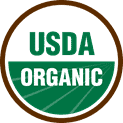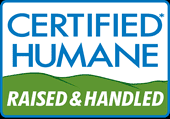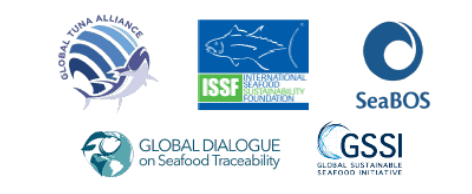Demystifying Food Labels
Don’t be fooled by “food frauds”! Food companies use the front of the package for their claims about the product, but what do food labels mean in terms of nutrition? These claims are, of course, designed to get you to BUY the product! Food manufacturers want you to believe that a food is “healthy”, “low carb”, “no sugar added”, “no trans fats” or some other measure of nutrition that would convince you to BUY. “All natural” and “made with organic ingredients” are especially convincing.
When you realize that the front of a package is for advertising, NOT nutritional information, you can make better choices. If you want to avoid the hype, just turn the package over and read the nutrition label; and if you want to become a “label detective”, my Happy Kitchen Academy will show you how. Email me to pre-order.
The FDA (Food and Drug Administration) controls many, but not all, claims. So, there is a lot of confusion with undefined and unregulated claims. Here are the facts about some of these labels.
Genetically Modified and Bioengineered Foods
A genetically modified organism (GMO) is a plant, animal, or microorganism with altered genetic material or DNA. Many consumers have concerns about GMO foods. Glyphosate is one of the most worrying problems with foods that are GMO (and many of these show up in processed foods like cereals) ; this is a weed killer (herbicide), better known as “Roundup.” Many crops that are GMO have been altered to include a gene that makes them resistant to this herbicide.
According to the Environmental Working Group, glyphosate is an herbicide that has been linked to cancer. There is a big movement to have this chemical removed from our food supply, since it’s been found in the bloodstream of more and more humans, especially children! There are other concerns about altering genes in plants and animals, but there is more research on glyphosate resistance than any other genetic modification in our food supply.
“Glyphosate has been linked to cancer, endocrine disruption, infertility, immune dysfunction, liver and kidney damage, and disruption of the microbiome. And not only is glyphosate harming human health and the health of our future generations, it’s also destroying our ecosystems. ” Mark Hyman, MD
GMO Labeling

Publix has good information about GMO labeling in this article:
“In order to ensure that labeling on genetically modified foods is consistent, the USDA’s National Bioengineered Food Disclosure Standard defines bioengineered foods as those containing detectable genetic material that has been modified through certain lab techniques and cannot be created through conventional breeding or found in nature. For each of these foods, manufacturers must include the BE symbol, words, or other disclosure on packaging by January 1, 2022.”
The Agricultural Marketing Service developed a List of Bioengineered Foods to identify the crops or foods that are available in a bioengineered form, including alfalfa, apple (Arctic varieties), canola, corn, cotton, eggplant, papaya, pineapple (pink flesh), potato, salmon (AquAdvantage®), soybean, summer squash, and sugar beet.”
I will add that oats and other grains that end up in children’s cereals are often GMO.
You can be sure that you’re avoiding GMO’s or genetic engineering by sticking to organic products. At a minimum, look for the non-GMO label. Of course, non-GMO does not tell you what kind of pesticides or herbicides the farmer HAS used, but you can be sure that glyphosate wasn’t one of them.
Organic Label

Organic is a USDA-defined labeling term. There are strict standards for the label “ORGANIC” and you will always see this symbol if a product has been certified as organic. You can learn more about organics, why you should buy them and how to maximize your dollars for better quality produce in my post What’s the Truth About Organics?
According to Publix,
“National organic standards forbid the use of most synthetic fertilizers and pesticides, sewage sludge, irradiation, and genetic engineering to grow fruits, nuts, vegetables, and grains. Organic meat and poultry must not be irradiated. The animals must have access to the outdoors, and they cannot be given any growth hormones, antibiotics, or other drugs. All feed must be 100% organic, with no animal by-products.”
Bar Codes on Produce
I always wondered what the bar codes and numbers on the produce labels meant. This is really helpful information, especially since bulk produce at the grocery store is not always displayed in the correct bin or slot. Take a look at the numbers below the bar code on an apple the next time you go to the store. Here are a few examples of numbers you might find:
- Four digit codes are for conventionally grown produce. If it’s organic, you’ll see a 9 in front.
- So convention Fuji apples in bulk might have a the following numbers on the sticker.
- Fuji Apples (4129), large (4131)
- If they’re organic, the numbers would be 94129 and 94131.
Meat, Poultry, and Eggs
With the disappearance of many small farms and the proliferation of BIG FOOF and concentrated feeding operations (CAFO), many people are concerned with the way animals are raised in the food production process, Not only are there considerations about humane treatment, but also about the direct health effects on consumers: hormones, antibiotics and even nutritional concerns. Here is a list of labels you may see on meat, poultry or dairy products from the Publix website:
”No added hormones: The USDA prohibits the use of hormones in all poultry. When no added hormones appears on poultry packaging, it must be followed by the statement Federal regulations prohibit the use of hormones. For beef and pork, a no added hormones claim means that the producer chose not to use any hormones.
No antibiotics: A no antibiotics claim may appear on meat or poultry labels only if manufacturers provide sufficient documentation to the USDA demonstrating that the animals were raised without antibiotics. This can be a little misleading, because the regulations only refer to antibiotics detectable at the time of slaughter. If an animal never received antibiotics, the manufacturer will be sure to tell you that!
Vegetarian fed: This claim means the meat or poultry received an all-vegetarian feed without animal products or by-products. Please note that young mammals drink their mothers’ milk; after being weaned, they are fed all-vegetarian diets.
Grass-fed: Grass-fed meat and meat products are generally understood to be those derived from cattle that consume only grass. However, because there is no official federal definition of grass-fed, check the label carefully. Some animals are only finished on grass, having been raised on a diet of grain.
Cage-free: This label leads one to believe that the chicken spends most of its time enjoying sunshine and fresh air with no confinement-not necessarily true! They’re not always happy chickens, since there are no government standard to control the claim of “cage free.” The flock may live in a barn that’s crowded. The flock can only roam a building, room, or enclosed area with unlimited access to food and fresh water during their production cycle. The “Certified Humane” label means that each hen has 1.5 square feet of space.
Free range: This term IS regulated by the USDA but can be miss leading. For chickens and eggs, free range leads you to believe that the flock has access to the outdoors.”This is partially true- it means hens were given continuous access to the outdoors during their production cycle. This does not guarantee that a hen ever actually stepped foot outside; it just means there was a way for them to do so.
It’s one step more humane than cage-free in philosophy, but according to NPR, it might just mean that the hens had a “few small doors that lead to a screened-in porch” with cement, dirt or a modicum of grass.” To be free-range and certified humane, there must be a minimum of two square feet of outdoor space per bird.
Pasture Raised: This term is not regulated by the USDA or any other certifying body. not regulated by the USDA. This information comes from Pete and Gerry’s Organic Eggs Website, :
“Generally speaking, pasture raised eggs come from hens with access to pastures outdoors. This may sound similar to free range, and that’s because it is. Here are are a few questions, misconceptions, and facts that explain what the term “pasture raised” means in practice….Simply put, pasture raised eggs are not necessarily healthier for you than free range, cage-free, or conventional eggs.
However, there are some nutritional benefits that accompany the outdoor access that pasture raised and free range standards offer. Research has shown that hens with access to outdoor pastures produce eggs with significantly more omega-3 fatty acids than eggs from caged hens. Another study suggests that eggs from hens with outdoor access contain significantly more vitamin D than conventional (or caged) eggs”
Certified American Humane and Certified Humane
There are the two main certifications you’ll find on egg cartons or packages of chicken or other meat. The certifications vary in their requirements, with many feeling that the American Certified Humane is more of an industrial designation than a humane one. This program doesn’t require animals to live outside and the minimum space requirement is only one square foot.
Meat, dairy and eggs that have the Certified Humane label has more humane requirements. Those animals were never housed in cages, crates or tie stalls. Animals are given more space to live a “happier , more natural life. Certified Humane is one of only two humane certifiers that require certain slaughter practices.

Certified Humane animals are not required to be pastured (though they might be), and not all Certified Humane poultry systems are free-range, meaning the birds don’t necessarily go outside. As stated on their website, “Welfare is more important to us than the farming system involved – and free-range does not automatically guarantee improved welfare… We [have] found that appropriately designed and well managed indoor systems can equally satisfy an animal’s key requirements.” Read more about their standards here.
Adele Douglas launched Certified Humane in 2003. The program’s parent organization, Humane Farm Animal Care, is a non-profit. Find Certified Humane products here
From Huffington Post:
“…But in order for pasture-raised eggs to also be labeled “Certified humane”, it means that the ladies were given ample space to roam outdoors ―we’re talking 108 square feet ― but also have access to a barn for cover. This mandated space means there’s ample room to allow for rotating the flocks, ensuring that they have fresh food to pick at.”
While the standards of these certifying bodies may disappoint some people, the “standards are highly verifiable”, according to Consumer Reports.
Seafood
If you’re purchasing frozen seafood, read the label carefully for additives. Sometimes, preservatives are added to wild caught or otherwise good choices of seafood. Ask the seafood department whether they treat that beautiful seafood in the case with preservatives. This is how they make it look “pretty” in the case and holds its color. This can be very disappointing and has happened to me more than once!
There are a number of labels relating to the sustainability, traceability and production methods of seafood. Each designation has its own standards, and none are regulated by the USDA.


Here are the labels you might see on seafood in a grocery store like Publix, taken from the Publix website:
“Sustainably sourced (wild caught): When you see our sustainably sourced icon with wild-caught seafood, it means that item has either been evaluated by the Sustainable Fisheries Partnership (SFP) and is considered “well-managed” in accordance with their guidelines, or it has an approved ecolabel as established by the Global Sustainable Seafood Initiative (GSSI).
Sustainably sourced (farm raised): With farmed seafood, the sustainably sourced icon identifies an item that has an approved ecolabel as established by GSSI’s standard for sustainable sourcing.
Responsibly sourced (wild caught): When you see our responsibly sourced icon with wild-caught seafood, it means that item has been evaluated by the SFP and is either considered “managed” in accordance with their guidelines or is from a fishery participating in a fishery improvement project that is credible and graded.
Responsibly sourced (farm raised): With farmed seafood, the responsibly sourced icon identifies an item that has an approved ecolabel as established by GSSI’s standard for responsible sourcing.”
For more advice about choosing seafood for pregnant women and children, the FDA has a great chart for helping you select fish lower in mercury. There are many studies that suggest that mercury is to be avoided as much as possible, especially during pregnancy. Medical science and the FDA agree that “Methylmercury can be harmful to the brain and nervous system if a person is exposed to too much of it over time.” This is from the FDA’s own site.
Claims Related to Eating Styles
Here are the terms you’re most likely to see that relate to specific diets or eating styles. Some of these terms, according to the Publix website are:
“Vegetarian: In general, vegetarians do not eat meat, fish, or poultry.
Vegan: In addition to being vegetarian, vegans typically do not consume animal products and by-products such as eggs, dairy items, and honey.
Plant-based: Plant-based or plant-forward eating patterns focus on foods derived from plants—including fruits, vegetables, nuts, seeds, oils, whole grains, legumes, and beans. This doesn’t have to mean entirely cutting out meat and dairy from your diet; it’s about choosing more foods from plant sources. Plant-based foods are on trend, with new options appearing in every category.
Important to note! There is no federal definition of the words vegetarian, vegan, or plant-based in the US. Several nonprofit organizations in North America and Europe have developed third-party certifications and icons for use on packaged foods. Along with these groups, many private companies have developed icons for their own food. It’s important to look for the meaning of each certification since they may differ greatly from one company to another.”
Kosher
If you’re maintaining a kosher diet, be sure to read labels carefully. While I’m repeating myself, but food manufacturers can be very cagey with labels. Look for kosher certification—the stamp of approval by a rabbinic agency. This stamp verifies that the agency has checked the product’s ingredients, production facility; and actual production to ensure that all ingredients, derivatives, tools, and machinery have no trace of non kosher substances.
There are a number of certifying agencies, each with its own symbol. For more information, go to https://www.crcweb.org/agency_list.php for a directory of Kosher certifying agencies.
Summary
I hope this list will lift some of the confusion surrounding food labels. Remember these tips to be sure you know what you’re getting:
1. Read carefully
2. Know what the terms mean.
3. Look for certifications.
4. Verify nutrition claims by turning to the back of the package.

